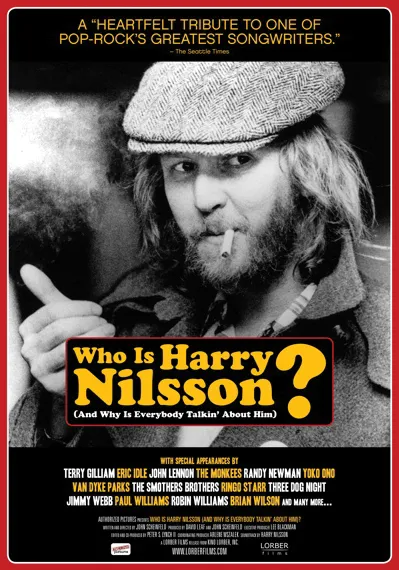Videos by American Songwriter
Who Is Harry Nilsson (And Why Is Everybody Talkin’ About Him)?
Lorber Films
[Rating: 3.5 Stars]
Harry Nilsson’s wordy, whimsical chamber pop was an apt stylistic bridge between the psychedelic era of the 1960s and the folksier singer-songwriter sounds crackling from AM radio in the early to mid-1970s. Whether or not one warms to Nilsson’s eccentric genius really isn’t the point: judging by the distinguished company this archetypal musician’s musician kept, the guy must’ve done something right. Offbeat ditties like “Good Old Desk” and “Coconut” gained him the respect (and eventually the friendship) of The Beatles, Randy Newman, Jimmy Webb, and countless other entertainment-industry somebodies. In Who Is Harry Nilsson, director John Scheinfeld’s approach to Nilsson’s unwieldy legacy is competently textbook at best. Scheinfeld’s all-star assemblage of showbiz-luminary interviewees (from Robin Williams to Terry Gilliam to Brian Wilson) and their gushingly sycophantic praise of Nilsson make for predictable softball hagiography; and for some reason, the wildest, most entertaining stories about Nilsson’s post-success drug-and-alcohol-fueled adventures are mostly buried among the DVD bonus features (see the bizarre “human fly” segment, for starters).
However, Scheinfeld does ably cover Nilsson’s varied recording history, and hammers home his determinedly renegade approach to navigating (and, over time, gleefully trashing) his own career. Still, much about Nilsson’s professional life adheres to the cliched meteoric rise-and-fall arc, and his particular method of self sabotage is clearly problematic for the filmmaker: Scheinfeld seems to side with interviewees like the bland Richard Perry, former Barbara Streisand producer and the man behind Nilsson’s 1971 smash Nilsson Schmilsson. Perry’s pleas for a similarly styled follow-up fell on deaf (and drunk) ears. Instead, Nilsson released the whiskey-soaked eructation Son Of Schmilsson, an album full of ramshackle barroom rock and roll and other oddball musical curiosities: it was the sonic equivalent of a middle finger to the soft-rock sounds that had brought him popular success. It’s a decision that can be seen as either heroically rebellious or silly and irresponsible; this film obviously chooses the latter perspective. Beyond this, Nilsson is portrayed as equal parts family man, musical enigma, and dedicated party animal until his death in 1994. Despite the film’s shortcomings, it still offers vital documentation of an unfairly unsung artist whose formidable talents – for both songwriting and self destruction – have rarely been matched since.


2 Comments
Leave a Reply